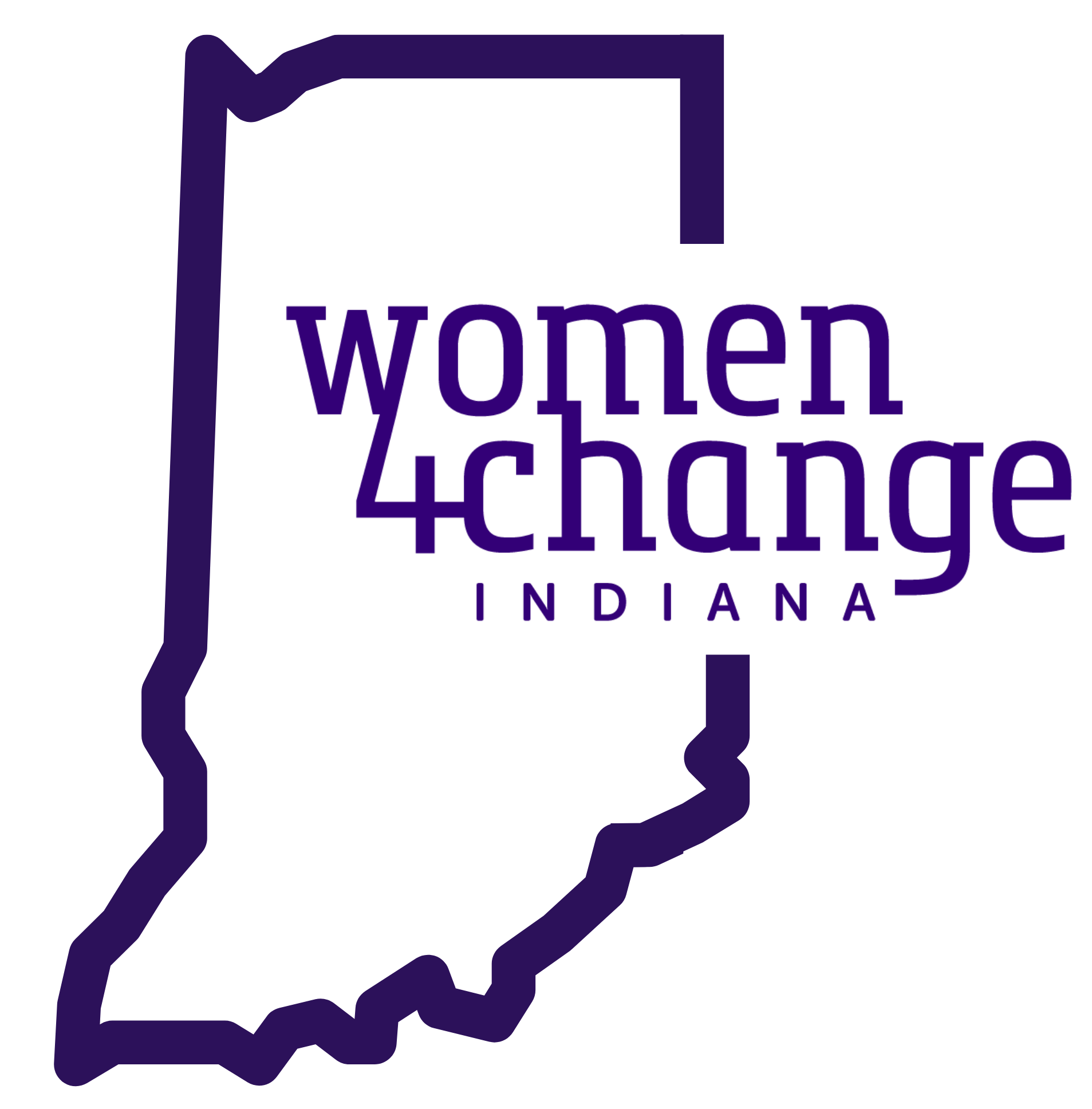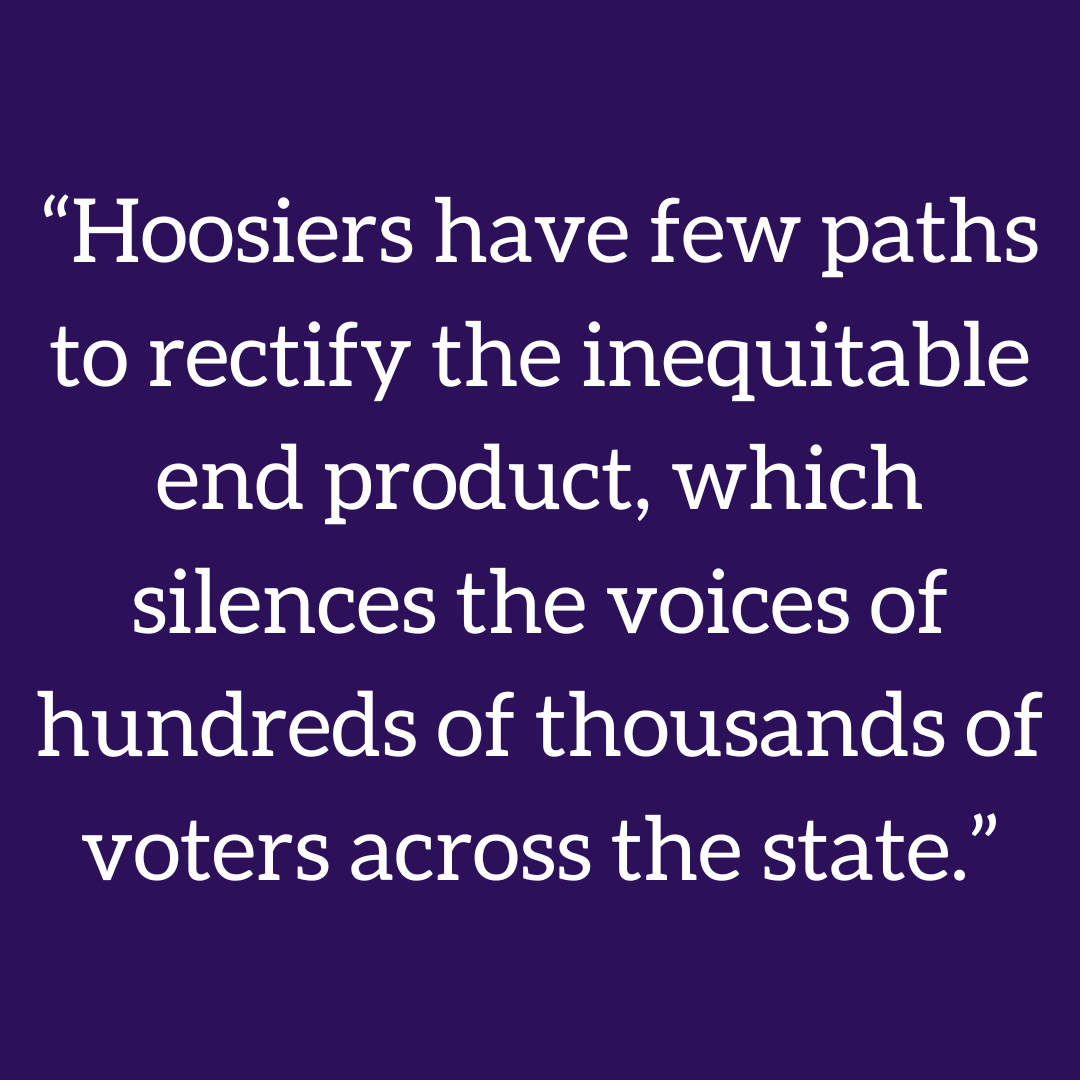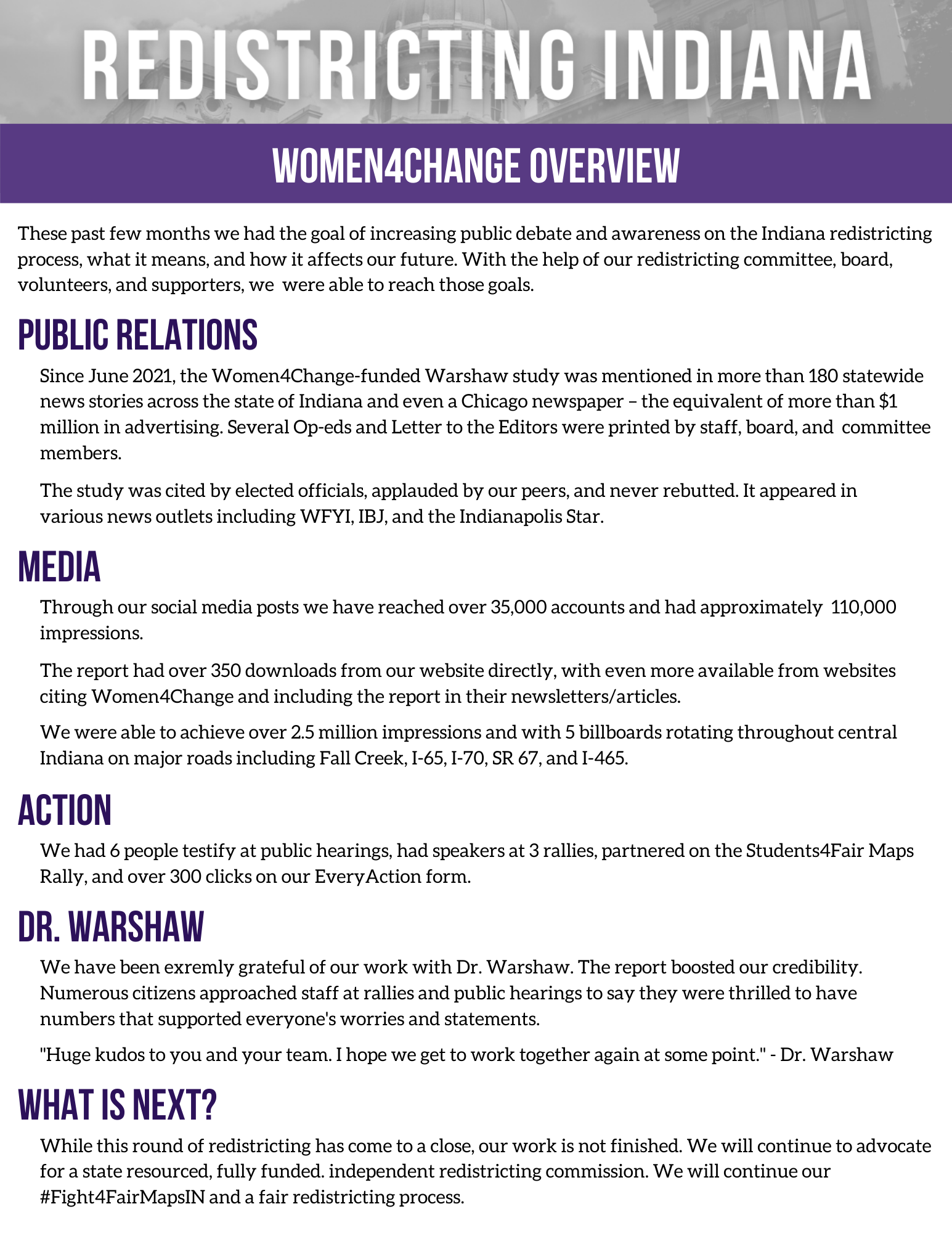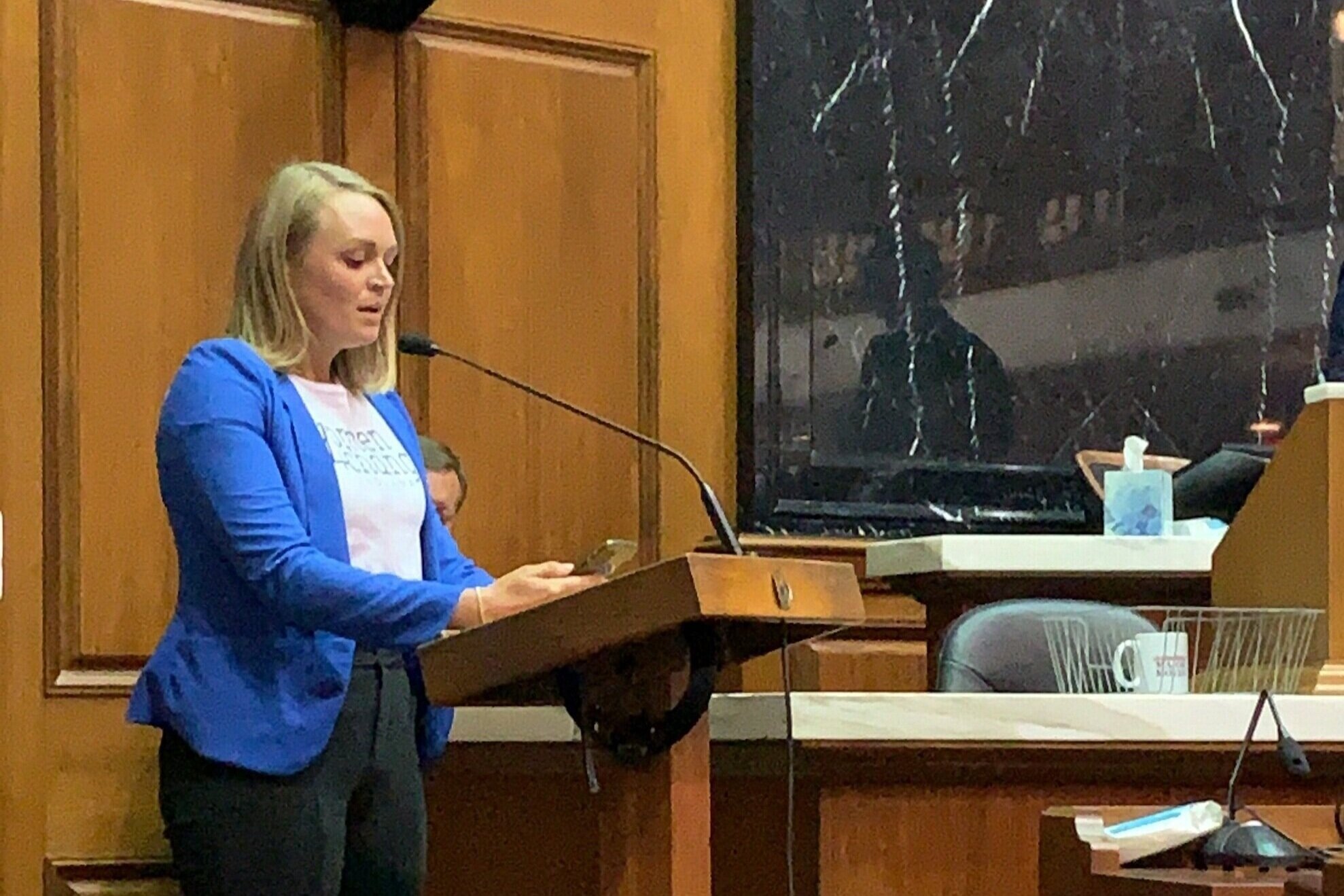Mr. Chairman, Members of the Committee:
Thank you for your service to the State of Indiana.
As you consider your responsibilities for drawing new state legislative and Congressional districts, I urge you to recall your pledge to uphold Indiana’s Constitution.
Article II, Section 1 states: “Elections shall be free and equal.” Long before federal civil rights requirements were enacted by Congress, Hoosiers set a high standard for participatory, inclusive Indiana elections.
Producing districts that weigh every vote equally is a commitment to working for the common good. It would encourage healthy, civil conversation and debate to reach the best decisions for all Hoosiers.
To assure a prosperous future and strengthen Indiana’s representative democracy, we must work together-- across demographic differences of age, race, or ethnicity, and whether we live in rural, urban, or suburban spaces. I have seen this work.
Women4Change, which I serve as a volunteer, is committed to help in this effort, knowing that women constitute a majority of our population, and what’s good for women is good for families and all Hoosiers.
During the Reagan Administration, at the request of Senator Lugar, I had the privilege of heading the federal HUD office for Indiana. It was rewarding to work with state, county, and local officials of both political parties to support the common needs for affordable housing and community development in both rural and urban settings. This is good for Indiana.
Later, I had the opportunity to represent a major Hoosier employer that came under two hostile takeover attacks. With strong bipartisan support, the General Assembly passed key revisions to Indiana’s corporate law, allowing directors to consider not only the interests of shareholders, but also the interests of employees, suppliers, customers, and communities where corporate facilities are located. This is good for Indiana.
The last 15 years of my professional career were spent in increasing access to higher education at USA GROUP and Lumina Foundation for Education. Education is fundamental to prepare Hoosier students for good jobs in our economy and to participate as informed citizens in our democracy. Thomas Jefferson believed that “An educated citizenry is a vital requisite for our survival as a free people.” This General Assembly appropriates a huge portion of state revenues to education, from K-12 through higher education.
So far, this is good for Indiana. But here’s where I get confused.
Indiana’s current legislative districts have been cracked and packed in such biased ways over the past several decades that fully one-third of House seats are not competitive and, therefore, are uncontested. The Indiana Senate is similar. It’s no surprise, then, that Hoosiers have among the lowest rates of voter participation in the US. Why bother? Thus, Indiana fails to take full advantage of the education taxpayers have funded. That’s NOT good for Indiana.
My religious tradition asks its followers to treat others, including strangers, the way we want to be treated. This respect for others could be exhibited by sharing openly with the public relevant information such as technical data files underlying proposed districts. Unfortunately, legislative conduct to date does not seem to reflect respect for voters or their education. So much for the value of STEM and STEAM education we are urged to support.
Furthermore, all hearings are being held during customary work hours—especially disrespecting our essential workers. These last two hearings are scheduled during the highest holy days of Jewish citizens, and very few days are allowed for the public to study proposed maps. This is NOT good for Indiana.
Respect for Hoosier voters should be apparent in legislative districts that give each vote equal weight. As one key example, reflecting the statewide vote for president and governor in the last two general elections would yield approximately 57 seats for one party and 43 for the other party in this House. That ratio would not only give equal weight to each vote across the state, it would encourage the House to model civil civic debate to reach the best decisions for the common good—rather than the polarization and disrespect among House Members that the public observed in the 2021 session.
If the maps passed by this chamber fail to reflect this statewide vote, voters will have reason to conclude, once more, that elected officials have chosen their voters rather than respecting voters to choose their representatives.
However, if the maps you enact DO reflect the overall statewide vote, Hoosiers may begin to acknowledge that their Constitution’s requirement is being met: “All elections shall be free and equal.” THAT WOULD be GOOD for INDIANA.
Please choose to work for the common good. THAT WOULD BE GOOD FOR INDIANA.
Thank you.





































